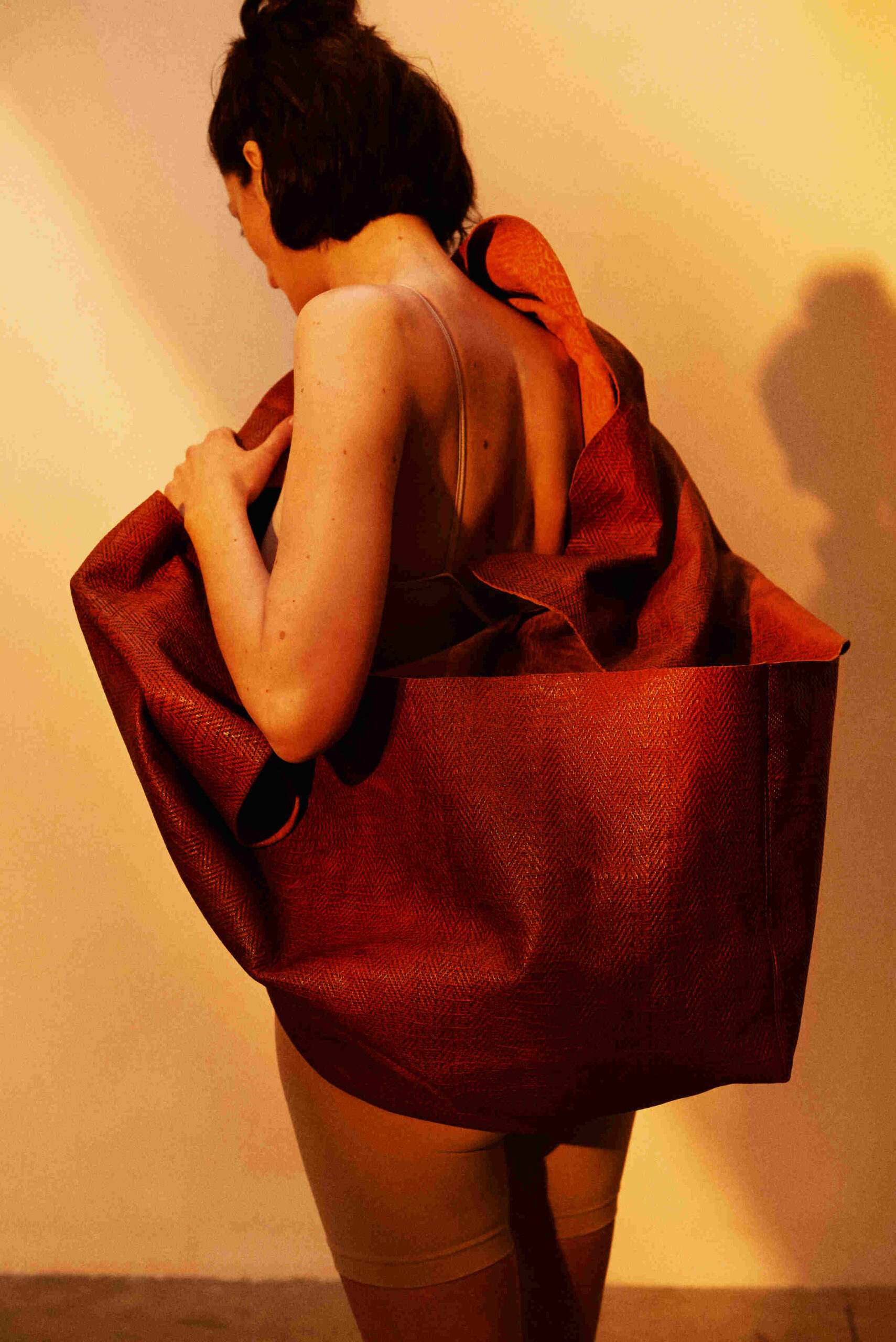We catch up with Liam Maher, Global Creative Director at ECCO and Stefano Pillepich, Head of ECCO Leather Goods to hear about the unique qualities, cultural and human values of leather and how they are both passionate about the sustainability of leather at ECCO.
Liam, what makes leather such a great material to design with?
Where do I start!? What constitutes my own feelings about “great design” and to a great degree this is also true within my role at Ecco, I look for three elements. I look to embody and harmonize aspects of:
- Where do I come from?
- Where do I belong?
- Where do I hope to go?
Given that I see design this way, the idea of memory is obviously central to achieving this blend within product. I don’t think it’s an exaggeration to say that out of all the materials used in fashion and footwear (wovens, knits, felts in cottons, silks, velvets, canvases, twills, damasks, brocades, nylons, rayons, ramies, viscoses, bio-fibres, etc) l
“Leather is the material with by far the greatest potential to capture memory. When both designers and consumers who are passionate about leather talk about this, you’ll often here them describe leather as a living material. Leather captures, complements, and remembers shape”
Like a living thing, it also changes over time. In fact, the way it changes has a humanistic quality – it becomes more supple, softer and more mellow… kind of like a person. Folks will even describe their relationship with a leather product – whether it’s shoes, bags or garments – as if it were a friendship.
Not only this, but unlike any other material, leather has the potential to take infinite forms, infinite hand-feels, infinite colors and infinite finishes. You need a visionary tannery packed with experienced and passionate leather makers like the ones we’re lucky enough to work with at ECCO Leather.
“What other material can reproduce the look and touch of a flower petal in one instance and the strength and robustness of a biker-jacket in another”?
Here again it’s a material which can simultaneously encompass and balance elements of where I come from, where I belong and where I hope to go. Our past, present, and future.
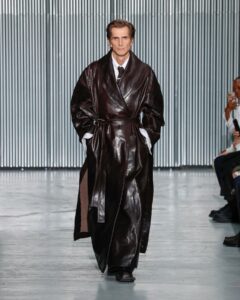
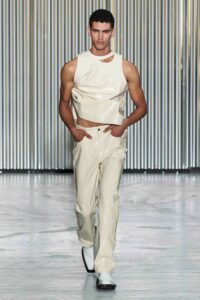
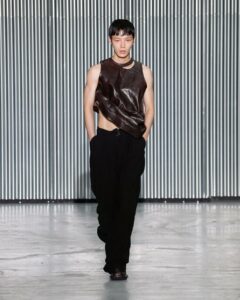
What place can leather hold in fashion for the future?
It’s fascinating to me that leather isn’t commonly regarded as an inherently sustainable material. The alchemy of tanning leather is essentially an ancient act of upcycling.
Clearly there are cultural, political and lifestyle values connected to meat consumption and populations quite rightly have different opinions on the subject. That’s great. It’s also great that those feelings and values are ever evolving. That is absolutely as it should be. But looked at through a realistic lens of where we are as a society today, the state of meat consumption remains at a level that ensures the processing of its primary byproduct into a valuable resource like leather remains a huge opportunity.
Maybe there’s something about the words that would need to be used to tell the story… -words like “meat” and “skin” and “animal”, that make this story hard to tell if we believe consumers don’t want to hear these words. But that doesn’t change the fact that leather is sustainable as well as being substantial and reliable at scale in the here-and-now.
Since there is no one as chronically dissatisfied as an inspired tanner or leather maker, the future will always be bright. If you take ECCO Leather as an example, the tannery’s chronic dissatisfaction has led to asking over and over again “how can it be more sustainable?”. This drive has led to milestone innovations like DriTanTM and the many others currently in the ECCO Leather development pipeline. Yes. The future is bright.
Stefano, what makes leather such a great material to design with?
I often say that leather is the ultimate upcycled material, since a caveman found a hide in a ditch and realized it wasn’t decaying. It is amazing to see the evolution of leather throughout the millennia, not only when it comes to its end-use, but also how its performance and, from a creative perspective, aesthetics have evolved.
Leather is warm to the touch, a natural insulator and water resistant and even a fire retardant: amazing characteristic when it comes to a natural material. Leather is exceptionally versatile when it comes to look, touch and feel: from traditional looks like pebble (“discovered” in the 18th century) to transparent leather (vellum, from ancient Egypt), from leathers fused to other materials to more traditional vacchetta.
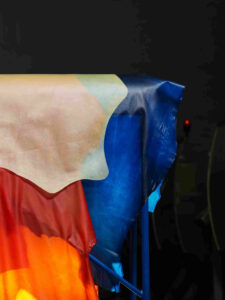
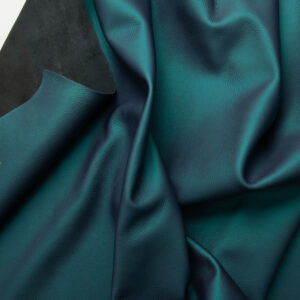
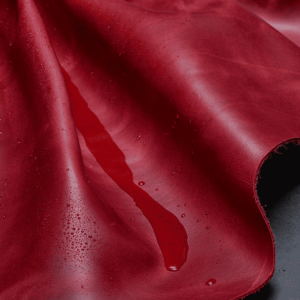
Leather can be made in different substance, weight, smooth or rough, dull or shiny, it can be embossed, printed on, dyed in unlimited colors; in ECCO Leather we like to say that making leather is like cooking: with the same ingredients, so many distinctive dishes can be created; and this is also true to leather. It is an upcycled blank-canvas material with almost unlimited possibility that is only limited by lack of creativity or too much traditionalism.
What place can leather hold in fashion for the future?
Probably we, in the leather industry, took things for granted: we thought that since leather has been around for millennia it will continue so. The reality is different: innovation is faster, communication and education are sharper, consumer curiosity is higher, lots of new materials are experimented with. There is lots to learn and adopt from the many exciting materials new-comers with their entrepreneurship, dynamism and communication.
The value, longevity, quality, properties, versatility of leather are undeniable; and they are still appreciated by consumers. So, I am positive that leather will still hold a prominent place in the fashion industry; however, we need to continuously find new places to use leather, innovate the product (leather) and the processes of leather making and communicate and educate the consumer.
(Liam & Stefano from Ecco are a supporter of our online exhibition It’s A Long Story. It’s A Long Story is designed to take visitors on a rich and inspiring digital journey celebrating the long lasting, circular, repairable, upcycling and recycling qualities that leather can offer).
